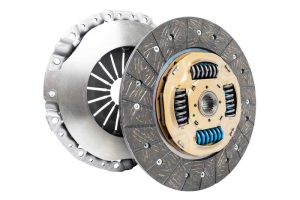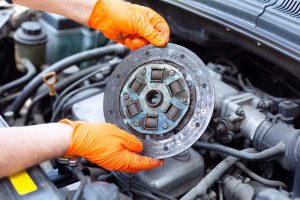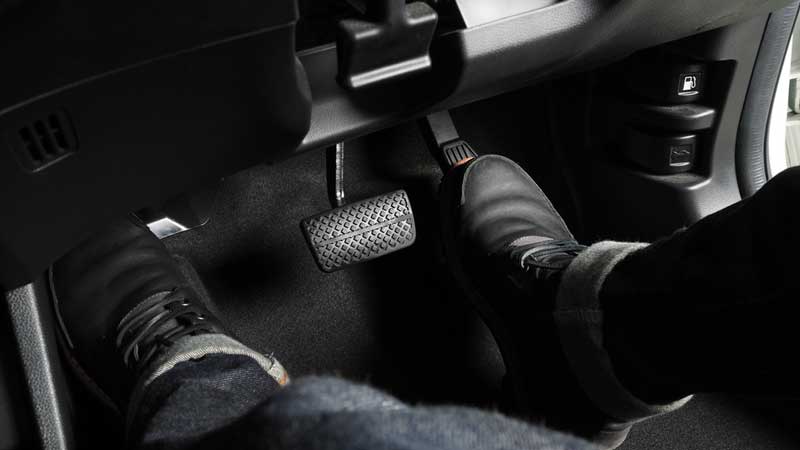What is double clutching? How does double-clutching work? Are you looking to know the answers to these questions?
In general, double-clutching is all about downshifting smoothly to ensure acceleration. It also serves as a backup plan, when a clutch linkage fails.
This article would learn about the advantages and disadvantages of double-clutching, which scenario can double clutching be more effective, and more.
Let’s get started!
What Is Double Clutching?
Double-clutching (outside the United States, also known as double de-clutching), is a technique used mostly in unsynchronized manual transmission vehicles, for shifting gears. Such vehicles include specialty vehicles and commercial vehicle trucks.
Shifting gears in a truck can be difficult, hence, the method is popular among truck drivers. It helps prevent tear and wear on certain transmission components and gives drivers a power boost.
Although double clutching is non-beneficial in synchronized manual transmission vehicles, the technique could help in upshifting smoothly to aid acceleration, and if it is performed correctly, it could prevent the synchronizers that mostly equalize transmission output and input speeds.
To enable downshifting from clutch once and changing to a new gear directly, you engage the transmission first in neutral before changing to a new gear. Then, you depress and release the clutch with each shift. A related rev-matching/downshifting method is heel-and-toe shifting, where there is a throttle blip (which means opened momentarily during downshifting) during the driver’s heel braking.
What Are Some Advantages Of Double Clutching?
Some of the double-clutching advantages include:
- The double-clutching technique may create a difference in your vehicle if you redline the car before shifting. This shift will slightly feel smoother.
- When the gear is shifted smoothly during double clutching, the stress on the synchros and clutch is less. And this results in an increased lifespan, making you save some money. However, under regular driving conditions, this advantage is almost insignificant.
- Another advantage of changing gear smoothly includes, passenger comfort. Your passengers are more comfortable when you can smoothly change gears. This is important for you, your passenger, and for having a comfortable journey.
- When the synchros or clutch are on the way out, applying a double clutch is better for them and your transmission. This will increase their lifespan.
- The principle of double clutching in modern situations, could be of great use. For instance, if your transmission is in neutral while slowing down in traffic, and you have to return it to gear before halting, you will observe a heavy jolt in lower gears, such as gears one and two. You should rather blip the throttle, before engaging the gear. By doing this, your engine speed will closely match your transmission speed, making the gear shift nicer and smoother for your transmission and clutch.
- Be prepared to drive an old vehicle.

Some Disadvantages Of Double Clutching?
Besides, double clutching is almost unnecessary in most driving situations, it also has some important factors that you should be cautious of, particularly if it is your first time.
Losing your vehicle’s control, is probably the major disadvantage of double clutching. While this is uncertain, especially if you are unfamiliar with the activity, you might skip the next gear accidentally, which means either your vehicle is halfway in gear, or it’s stuck in neutral. Many problems could arise if the gear is in neutral at an inappropriate time. This simply would mean that you have no control over the car anymore- the engine and the wheels are not connected. If you fail to take back control immediately, it could lead to a vehicle crash.
Due to this reason, you may decide to practice only on straight abandoned roads close to your house. To assure more safety when the vehicle is parked up and switched off. When you get familiar with the clutch, and the process of switching quickly, it means when you are driving for real, you will make zero or no mistakes.
Although you may try to avoid wear on your clutch and synchros, you use your clutch pedal two times more often. This results in double strain on the rest of the clutch parts, rendering the entire process futile.
Recent vehicles are manufactured in a way they can shift normally. Double clutching won’t be an option here.
Is a Double Clutch Also a Dual Clutch?
There is nothing like a double clutch. Double clutching or double clutch is a verb. A particular type of automatic transmission, that uses 2 clutch packs is known as the dual-clutch transmission. One pack takes care of the even gears, while the pack handles the odd gears.
Also Read: Engine Replacement Cost
Should One Ever Double-Clutch While Driving On The Road?
There will be no need if your vehicle is a modern model or make. This is for no reason, just that double clutching is not necessary for modern vehicles. Furthermore, with technological innovations, there is no or zero need for double clutching. In cases where double clutching was used before, other relevant driving methods exist now to make the work more effective.
Such an example will be the “heel and toe” method, which will be discussed shortly. From our judgment, you may have to apply the double clutching method, only when there is nothing in front, and you are accelerating hard. It is enjoyable and safe this way and, in a little way, excellent for your car transmission.
If your vehicle is an older model, the answer will be perhaps. The invention and introduction of transmission synchronizer, to vehicles, was in the 1920s, and Cadillac did the first installation on production vehicles in 1928. So, that was about a hundred years ago.
The gearbox was non-synchronous before this. And these are mostly known as “crash gearboxes.”, Because changing gear smoothly was a bit difficult. And this made the ability to drive a special skill back in the day.
How to Double Clutch Downshift
1. The Right Time for a Double Clutch
Years ago, before the introduction of synchromesh transmission, double clutching was essential to avoid your gearbox tearing up. Nowadays, you may decide to downshift without performing the double clutch, although the RPM may rev up, and the shift may not be so smooth.
Still, there are 2 reasons you would want to do a downshift double clutching, on your manual vehicle. Get a smooth shift, especially if you want to skip more than 1 gear. For example, you could downshift from the fourth to second gear, when you turn around a corner and don’t want to use your brakes.
Normally, skipping a gear without a double clutch in your downshift could cause a jerky shift. Prolonging the health and life of a synchros. For example, moving from the 3rd gear to the 2nd may take some time for the second gear synchro to function properly. This means that there is no proper meshing of the gears. However, if double clutching is done properly, gears can be switched instantaneously, preserving your synchro’s lifespan.
2. Find a Space
A space is best recommended for the practice. Although double clutching is not difficult, you may have to minimize the chances of creating more problems, while learning.
3. Start With Low Gear
For practice, you can start with a low gear. For example, you can accelerate to the third gear and press the clutch for a normal gear shift. Again, nothing is new in this procedure.
4. Change the Gear
When pressure is applied to the clutch, move to neutral and release the pressure on the clutch. You could travel about 25mph (or 40 km) with a neutral transmission.
5. Increase Your RPM
Increase your RPM by depressing the accelerator while your vehicle is in neutral. The main goal in this stage will be to strike the accelerator till your engine RPM becomes higher than the lower gear RPM, therefore helping the speed of the transmission and engine to balance out.
To fully understand the concept, consider what happens if the transmission is dragged from third to second, for instance, without a double clutch. The RPM will shoot through the roof. However, the objective is to take the RPM close to the state it will be in a typical downshift before the downshifting takes place. This reduces wear and relieves pressure on your transmission.
6. Push the Clutch in Again
Without placing a foot on acceleration, push the clutch In again. The name “double clutching ‘is gotten from this. You can shift into low gear after the second hitting of the clutch. Then Switch from neutral to your gear of choice.
8. Release Your Clutch Quicker Than Normal
Well done – the job is done. You can practice the double clutching with low speed and low gears. Once familiar with it, you can gradually increase the traveling and double the clutching speed.
Although the basic procedure is simple, gaining mastery may be difficult. If you are interested in racing, you may just spend more time practicing heel/toe downshifting, which requires a lot of practice but uses the same basic technique.

What does “Granny Shifting” mean?
We can simply say granny shifting is the art of upshifting or downshifting through manual transmission gears. This implies that there is no double clutching, or rev-matching happening through your shifts, and this also means that when you downshift, the vehicle will possibly bog.
In this case, blipping your gas pedal in between shifts or “rev-matching” could make things go smoothly, but doing it is not so necessary. However, if your vehicle transmission is manual and you shift through gears while driving, you are technically practicing “grand shifting,” which is a proper way of driving.
Also Read: Control Arm Replacement Cost
Frequently Asked Questions- What is Double Clutching?
What is the purpose of double clutching?
The main aim of double clutching is to help match the input shaft rotational speed to the driver’s desired gear rotational speed.
What is double clutching, and how does it work?
To double clutch means to release your clutch while your transmission remains neutral. When the clutch pedal is released, the clutch and the engine are linked together, but as your transmission output shaft is connected to the propelled wheels, the rotation gets faster.
When should I double-clutch?
In semi-trucks, for instance, there is a need to double clutch while shifting gears. And this means pulling out the gear, by engaging the clutch and engaging it again to switch to any gear of choice. After double clutching, avoid dumping all the clutch at the same time.
How do you double-clutch when driving?
If you are double clutching, whenever you are about to switch gears, always remember to apply pressure on the clutch and depress it two times. When your gear shift handle is moved, the gears are changed by a rod linked to a fork. The fork is responsible for moving the collar toward your next gear.
What is double clutching and Granny shifting?
Granny shifting can be explained as downshifting, or uplifting through manual transmission gears. This simply means that no double clutching or rev-matching is happening through the shifts, and this equally means that your vehicle will bog whenever you downshift.

